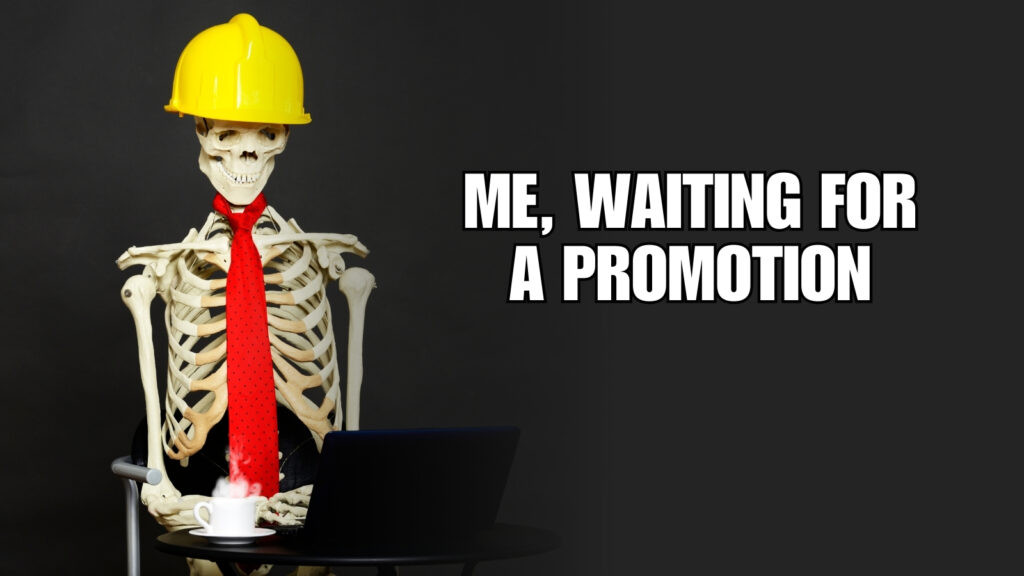In the safety industry, climbing the career ladder isn’t just about logging hours or ticking boxes; it’s about demonstrating proactive leadership and the ability to drive meaningful change.
Securing a promotion in safety comes down to two choices. Option one is to do good work and wait around for someone to hand you a new title and paycheck. (Spoiler alert: You’ll be waiting awhile, so get comfy.)

OR you can take option two: do great work and take proactive action to demonstrate your worth and potential.

An often overlooked, but powerful way to secure a promotion is to pitch a project and offer to lead it. Putting together a strategic business case is a sure-fire way to showcase your skill, initiative and commercial nous, and it’s sure to catch management’s attention.
Now, this can’t just be any old safety project. You need to find something new and necessary, and then craft a compelling case that blends concrete data with persuasive storytelling.
Sounds great! So how do you do it?
The first step is to bring attention to the problem to be solved. Then, create the case for change in a way that makes opting to keep the status quo not only uncomfortable, but a poor business decision.
A word of warning. Don’t go in guns a blazing telling your executive all the bad things the company’s doing and how you’ve got a new fangled solution to make everything better. Not only will this immediately get them offside, but if your team, executive or stakeholders don’t even agree there is a problem to be fixed in the first place, you’ve already lost the battle.
Instead, present your case with curiosity, ask questions and seek to educate and understand. Take them on the journey. Be ready to address potential objections head-on, and emphasise the risks of no action.
Change is hard—you need to make it worth the effort.

Step 1: Identify the Pain Points
Start by identifying the pain points your organisation faces without your proposed safety initiative.
- Are there recurring safety incidents or compliance issues?
- Inefficiencies in managing current safety protocols?
- A lack of engagement in safety from the frontline?
Gathering data on these issues is crucial.
Why?
It helps you build a compelling narrative that highlights the urgent need for change. Use this data to craft a story that paints a vivid picture of your current challenges and the serious consequences of sticking to the status quo.
Step 2: Showcase the Data
Data is your most powerful ally.
Collect and present statistics that underscore the negative impacts of these safety challenges on the organisation.
This could include metrics like the number of workdays lost due to injuries, cost of non-compliance fines, or a benchmark showing how competitors are faring better with more advanced safety measures.
The key here is to make these figures relatable and alarming, highlighting the cost of inaction.

Step 3: Propose a Solution
With the stage set and the problem clearly outlined through data-driven insights, introduce your proposed project.
Your solution should directly address the pain points you’ve highlighted.
For example, if data shows a high rate of injuries due to outdated equipment, propose the adoption of newer, safer technologies.
Connect every aspect of your proposed solution back to the data, demonstrating how each element will contribute to:
- safety improvements,
- cost savings, or
- efficiency gains.
Show that you understand how and why the investment will positively impact the business’ bottom line or commercial goals.
Step 4: Preempt Objections with Storytelling
Anticipate potential objections and weave them into your narrative as hurdles you have already considered and overcome.
For example, if cost is a likely concern, prepare data showing long-term savings that outweigh initial expenses or highlight potential revenue losses from incidents or non-compliance.
Be ready to practise the three T’s:
- Teach,
- Tailor, and
- Take control of the conversation.
Guide your audience to see the proposed change not as a cost or time burden, but as a necessary step forward.

Step 5: Create a Vision of Success
Storytelling is powerful; use it to paint a vivid picture of what future success looks like with your project implemented.
Describe a day in the life of the workplace with improved safety measures, the positive feedback from employees feeling safer, and the recognition from industry bodies for exemplary safety standards.
This vision should be so compelling that the pain of changing is seen as a valuable and necessary investment for a safer and more efficient future.
Step 6: Make Your Ask
Conclude your pitch by directly addressing your readiness to lead this change.
With all the data and narratives laid out, confidently make your ask:
“Given the clear need for enhanced safety measures and my detailed plan to achieve them, can I lead this project?”
This not only positions you as the solution to the problem but also demonstrates your leadership and commitment to the company.

By effectively leveraging a mix of data, preemptive problem-solving, and engaging storytelling, you can craft a pitch that not only argues for a new project but also strategically positions you as the leader best suited to drive it forward.
This approach doesn’t just aim for promotion; it aims to transform your workplace for the better.
And, if after all your effort, you still don’t get the bump you need or deserve, it might be time to start looking elsewhere…

Want to level up your safety career?
Check out our range of templates and toolkits—available for instant download in the SafetySocial shop. Plus for a limited time save 10% storewide with code EOFY10. Offer ends 30 June 2024.



